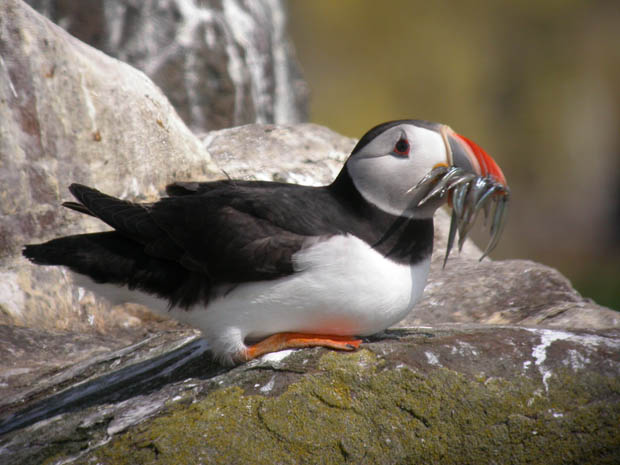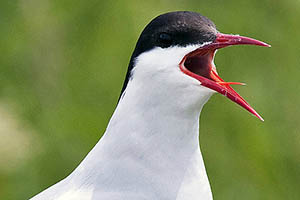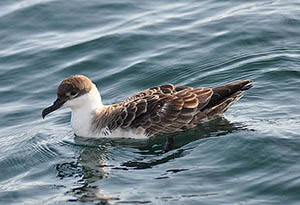Scary!
[dropcap]W[/dropcap]hat can 30 years of research and monitoring on Maine seabirds teach us? That the marine environment is changing fast. That ocean birds may be failing to adapt. That the scope of few marine threats – from ocean warming and offshore energy development to competition from commercial fisheries − could have been foreseen when Maine Coastal Islands National Wildlife Refuge staff began studying the birds in the early ‘80s.
The refuge, made up of more than 50 islands in the Gulf of Maine, uses data from research and monitoring to manage Maine seabird colonies and try to stem the birds’ decline.
Consider the Arctic tern. Its 36,000-plus mile-per-year migration from its wintering grounds in Antarctica to its Maine breeding grounds is the world’s longest; the little bird makes the equivalent of three round trips to the moon in its 30-year lifetime. Small light-sensing units called geolocators have been used to document the distance flown. But over the last five years, counts of Arctic terns in Maine have dropped by 42 percent, from 4,224 pairs in 2008 to 2,467 pairs in 2012. “There are fewer pairs of Arctic terns breeding in the Gulf of Maine, and those terns that do breed are producing fewer chicks. They’re doing very poorly,” says refuge biologist Linda Welch.
Similar declines reported by the Netherlands and Iceland suggest that more than a local factor is to blame. Some researchers suspect climate change is disrupting the food chain in the birds’ wintering grounds. “So it might be the birds can’t find enough food to rebuild their body stores and regain the energy they need to fly from Antarctica all the way back to the coast of Maine in good enough shape to start breeding again,” says Welch.
Or take the Great Shearwaters that spend summer in the Gulf of Maine. Satellite tags show the large birds forage across the entire gulf – not just near the coast, says Welch. She hopes developers will consider that in deciding where to place proposed offshore wind farms. “Other research projects have shown that most of the seabirds along the Mid-Atlantic funnel close to the shoreline. In some cases, they say that once you go beyond five miles, there are no birds out there. In Maine, that’s definitely not the case.” Because ocean topography varies, she says, a study done in one region may not apply to another.
Bird-tracking devices may also help researchers unravel a mystery: why some Maine seabirds can’t find enough fish to feed their chicks. Arctic terns forage for herring and other small fish at the water surface; unlike puffins and razorbills, they can’t dive for fish. Machias Seal Island once hosted the largest tern colony in the Gulf of Maine. But in 2007, a fish shortage led 3,500 tern pairs to abandon their nests. “They haven’t raised any chicks since,” says Welch.
To read complete story click here […]









